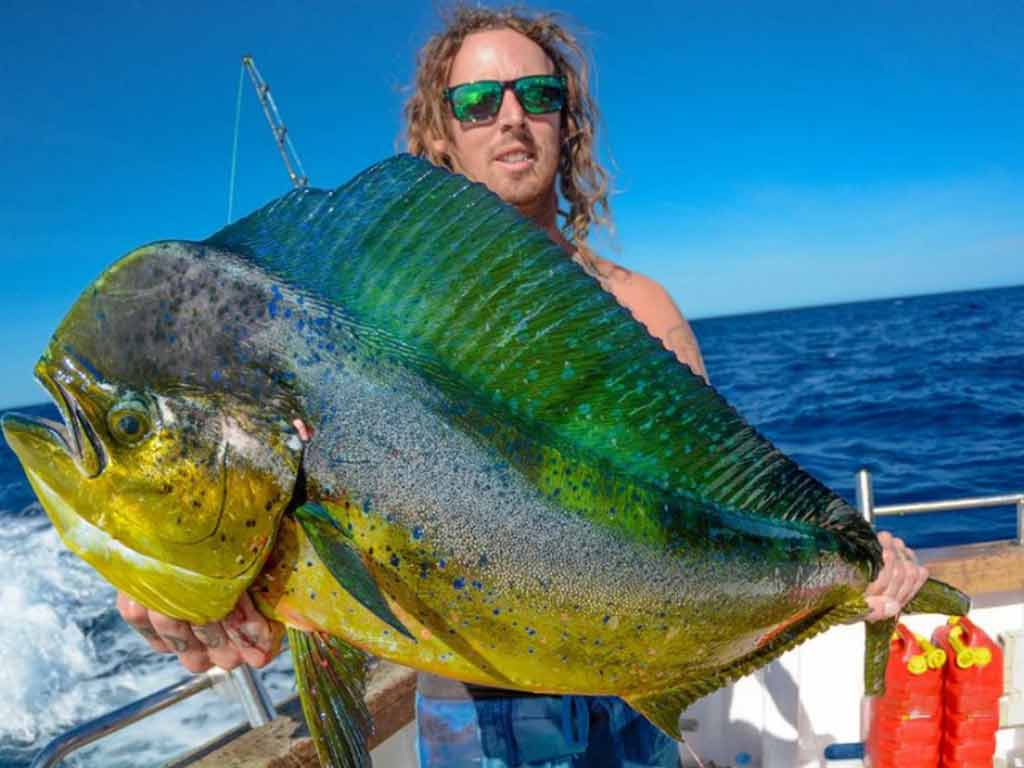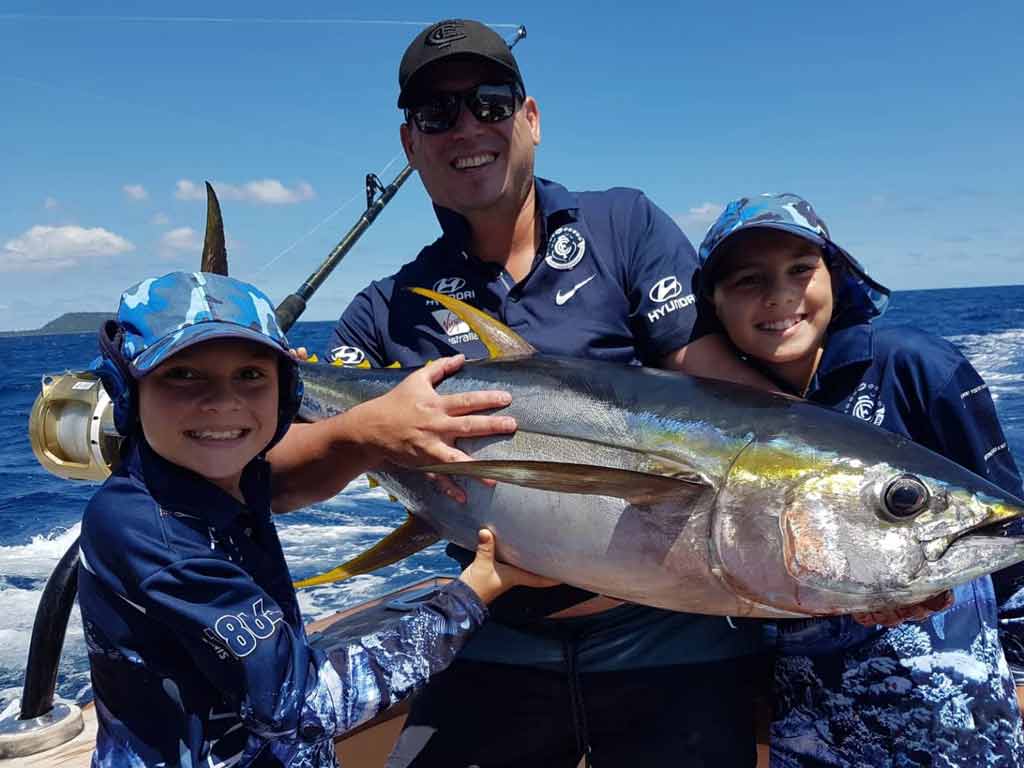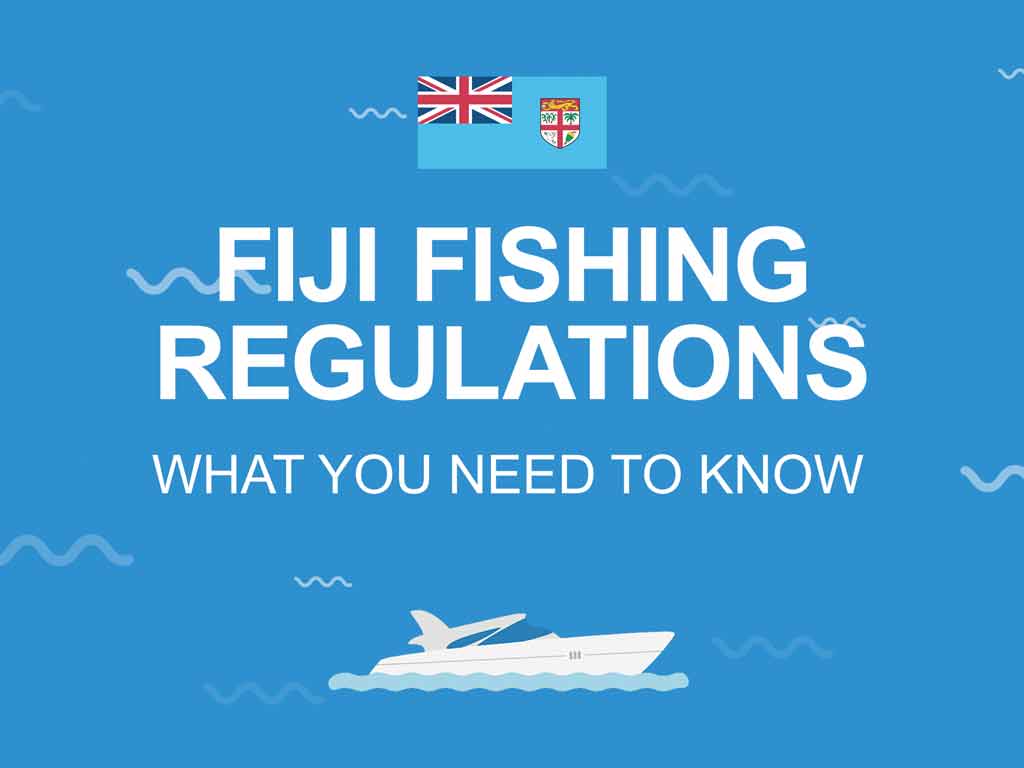https://fishingbooker.com/blog/fishing-in-fiji/
What does your ideal vacation look like? Our ultimate getaway includes turquoise waters, white-sand beaches, tropical temperatures, and of course, premier fishing opportunities!
Guess what, this isn’t a figment of our imagination.
Heaven-like angling destinations do exist and Fiji is at the top of the list.
With picture-perfect islands and a vibrant underwater world, fishing in Fiji is everything you ever dreamed of.
The South Pacific Ocean is the beating heart of Fiji’s thriving marine life. This makes Fiji a year-round home to the world’s most prestigious game fish. Explosive Sailfish, royal Tuna, and exotic Mahi Mahi will throw a spectacular show for you. Meanwhile, the hospitality of Fiji fishing charters will simply leave you speechless. Sounds too good to be true, doesn’t it? But it’s not.
We know how divine fishing in Fiji is and we won’t shut up about it.
Allow us to share our enthusiasm with you in this guide. We’ll gush about the majestic beasts you can catch, and reveal the best fishing spots where you can target them. We’ll cover different ways of fishing as well as the latest regulations. Are you ready to join us on this tropical adventure? Read on…
What can I catch in Fiji?
The better question would be, “What can’t you catch in Fiji?” There are thousands of different fish species scattered all over the archipelago. From colorful reef beauts to powerful deep sea warriors, Fiji is oozing with potential catches. It’s impossible to mention them all, so we’ll focus on the most prized fish. Let’s see the superstars.
Mahi Mahi
Less than half an hour into the open sea and you could already be chasing after Mahi Mahi. These speedsters aren’t exclusive to Fijian waters, but they’re certainly the embodiment of the archipelago’s tropical vibe. With bright colors, admirable game fish traits, and excellent table fare, it’s no wonder they’re on everyone’s list.

Mahi Mahi inhabit these waters throughout the entire year, but the peak season runs from May through October. Usually, you’ll notice them traveling in packs and meandering around floating objects in search of food. Alternatively, you can easily locate them by trolling. While spotting and luring them isn’t challenging, reeling them in is when you’ll have to roll up your sleeves.
When you end up victorious, reward your taste buds with fresh Mahi Mahi sashimi. Not only will the struggle be worth it, but you’ll want to sign up for a new round of Mahi Mahi pursuit.
Tuna
Now that we warmed up with Mahi Mahi, let’s move on to the big names. Tuna fishing is essential to Fiji’s economy. While the majority of its fishing industry relies on Albacore Tuna, Skipjack and Yellowfin Tuna supplies aren’t lagging behind. What’s more, they’re also every angler’s favorites. With these mighty beasts joining the conversation, Fiji’s fishing scene just started to heat up.

Tuna, also known here as Yatu, are migratory species, and the winter months are the most productive for going after them. Undoubtedly, Yellowfin Tuna are the main attraction. Their admirable size and strength will have you gasp in awe. Endure the struggle, and you’ll feel proud with Yellowfin Tuna gracing the end of your line.
Trolling is the most effective method for catching Tuna, but locals practice the traditional approach with a line and pole, too. Nadi, Denarau Island, and Namotu Island are ideal departure points for targeting Tuna. And Fiji fishing charters are plentiful there.
Giant Trevally
Speaking of massive game fish, there’s a potential three-digit catch that can make your day – Giant Trevally. Though it’s more common to come across 50-pounders, Fiji’s blue waters also produce GTs that can weigh up to 100 pounds! Larger specimens are permanent residents around Kadavu Island and the Great Astrolabe Reef – one of the largest barrier reefs in the world.

Cast poppers work wonders with these giants. For the safe release of GTs into the water, locals also recommend using heavy tackle. To maximize your likelihood of reeling the magnificent Trevallies in, visit Fiji anywhere from January to April. But, truth be told, you’ll be able to target them year-round across the archipelago.
Marlin
Slowly, but surely we’re reaching the top of the pyramid with these royals. These breathtaking jumpers have long been the dream catch of almost every angler on the planet. Marlin are premier members of the Billfish family. They’re widely recognized as pioneers of the big game fishing scene. And Fiji boasts some of the best Blue, Black, and Striped Marlin fishing corners in the world.

These solitary creatures are usually spotted offshore during their food runs. Marlin are insatiable and won’t be able to resist tasty ballyhoo or bonito baits. Trolling is your go-to technique and a fighting chair is your best friend when testing your skill against these monsters. Seasoned anglers will testify that there’s nothing more rewarding than coming out glorious after a long clash with these titans.
Note that Marlin, as well as the other Sailfish and Billfish, are strictly “catch and release”. Fiji fishing charters will guide you on how to go about safely releasing them into the water.
… And Much More!
We might have reached the top of our pyramid when it comes to big game fishing, but angling in Fiji is so much more than its headliners. Families with kids can cast a line or two in the nearshore area and marvel at a variety of species. With hundreds of islands, miles of reefs, and acres of water, Fiji’s underwater world is simply teeming with life.

Sailfish, Swordfish, Spearfish, Wahoo, and Dogtooth Tuna are additional names that stand out from the crowd offshore. But no matter how much you’re fascinated by these giants, you’ll be more hypnotized by the colors and names of some smaller specimens. Rainbow Runner, Leatherjacket, Parrotfish, Butterflyfish, and Purple Queen are insanely fun fish you can stumble on while fishing in Fiji.
How can I fish in Fiji?
Charter Fishing
Fishing around exotic islands in the middle of the ocean sounds magical. But how much do you actually know about what to expect there? When to go after Yellowfin Tuna? Where are the hotspots? What to pack for an offshore trip? The wisest thing you can do for yourself when traveling to a remote destination like Fiji is to hire a local guide who’ll answer all your questions.

Pairing up with a licensed boat operator has numerous benefits, with inside knowledge being at the top of your list. Fiji fishing charters have spent their entire lives exploring these waters. They’ll take you where the fish are biting and help you prepare for your trip. Also, you won’t have to worry about rules and regulations. A fishing license will either be included in your trip or the captain will inform you on how to go about it.
Handline Fishing
Fiji is all about tradition. You’ll crave experimenting with their traditional fishing techniques, the same way you’ll crave their traditional food, drinks, and well-known hospitality. One such common practice of reeling in fish is handline fishing. It’s been around since the locals can remember. This is a simple, yet effective method. Line, reel, bait, hook, your hands – you’re all set!

Handline fishing is one of the oldest approaches to catching fish here. While it sounds like you can only target smaller reef species, you’ll be surprised to learn that you can land bigger specimens like Barracuda, too. Just make sure to wear gloves when reeling the big ones in! Handline fishing is also the ideal way to bond with the locals, hear their life stories, and experience their culture firsthand – no pun intended!
Shore Fishing
If you’re a fan of white-sand beaches, then casting from shore might be the right choice for you. Especially, if you’re looking for some quiet alone time. You’ll be soaking in the tropical sun and feeling the smooth sand, all while luring a fish or two your way. And who knows, you might even get yourself a nice Giant Trevally or intimidating Barracuda.

Depending on where you’ll be staying, you’ll either have to bring your own equipment or you’ll be able to rent it on the island. It’s important to know that not all beaches are fishable. Some resorts have a strict “no fishing” policy, but they’re willing to direct you towards places from which you can fish. We recommend consulting with the locals before casting your line from the beach.
Where can I fish in Fiji?
With more than 300 islands and 500 islets, knowing where to fish in Fiji can be challenging. But, once you understand that less than a third of the archipelago is inhabited and that majority of the population is either on Viti Levu or Vanua Levu islands, it’s instantly easier to figure out where to start from. We’ll help you out further by outlining the best departure points from both islands and their surrounding areas.

- Namotu Island. Nestled right off the western coast of Viti Levu, Namotu Island is a synonym for water sports. Be it trolling for Yellowfin Tuna or popping for GTs, Namotu Island is your go-to angling destination.
- Nadi. Just minutes from Namotu Island and you’re in Nadi. This city is best known for its luxury hotels and Blue Marlin opportunities. While not particularly abundant in sandy beaches, Nadi is the perfect departure point for offshore fishing.
- Sigatoka. The southern part of Viti Levu boasts exceptional angling spots. Cuvu, Sigatoka, and Suva are among the most prominent. But, Sigatoka is the true gem thanks to its breathtaking parks, the Sigatoka River, and incredible fish diversity.
- Kadavu Island. Across from Suva, there’s a Marlin and Tuna haven. Not only is this place perfect for big game fishing, but Kadavu Island is also home to the rich ocean ecosystem of the Great Astrolabe Reef.
- Savusavu. Located in the gorgeous Savusavu Bay in the northern part of Vanua Levu Island, Savusavu features lovely beaches and the rich marine life. It’s ideal for divers and fishing enthusiasts alike.
Fiji Fishing Regulations
Fiji’s fisheries are desired by many and the government pays a lot of attention to preserving them. The fishing industry is heavily monitored and there are numerous rules on what’s allowed in terms of angling methods, gear, and catches. The easiest way for you to ensure peace of mind and be certain you’ve respected the law is to pair up with a licensed fishing guide.

Certified charter operators are your reliable source of information on the latest regulations. They’ll hook you up with licenses, the right equipment, and guide you on how to approach each fish. While size limits apply to species like Parrotfish, Leatherjacket, Giant Trevally, Barracuda, and Snapper, others, like Billfish and Grouper, are off-limits for keeping altogether.
Additionally, you should be mindful of the rest of the underwater world while fishing and avoid harming Turtles, Oysters, and Clams. For more information, visit the Ministry of Fisheries Fiji’s website.
Fiji: Oceania’s Paradise

If you’re looking for a sensory explosion, Fiji is your destination. From colorful fish and delicious food to the endless hues of blue scattered all over the waters and skies, Fiji truly is a paradise. Mix it up with big game angling opportunities unlike any other and there’s no doubt you’ll be in heaven while fishing in Fiji.
Did we gush enough about how mesmerizing this place is? Probably not. But, that’s ok. It leaves room for you to explore Fiji on your own and then tell us all about it.






0 comments:
Post a Comment